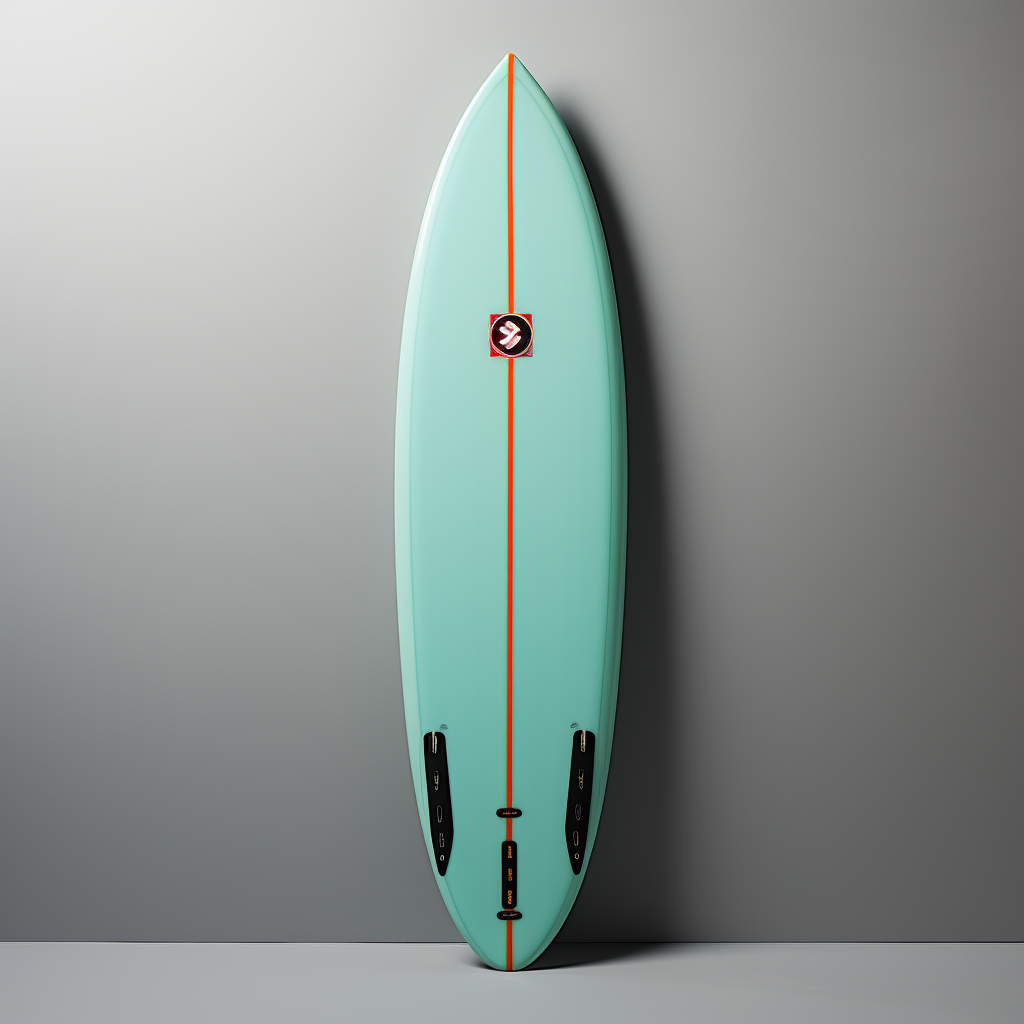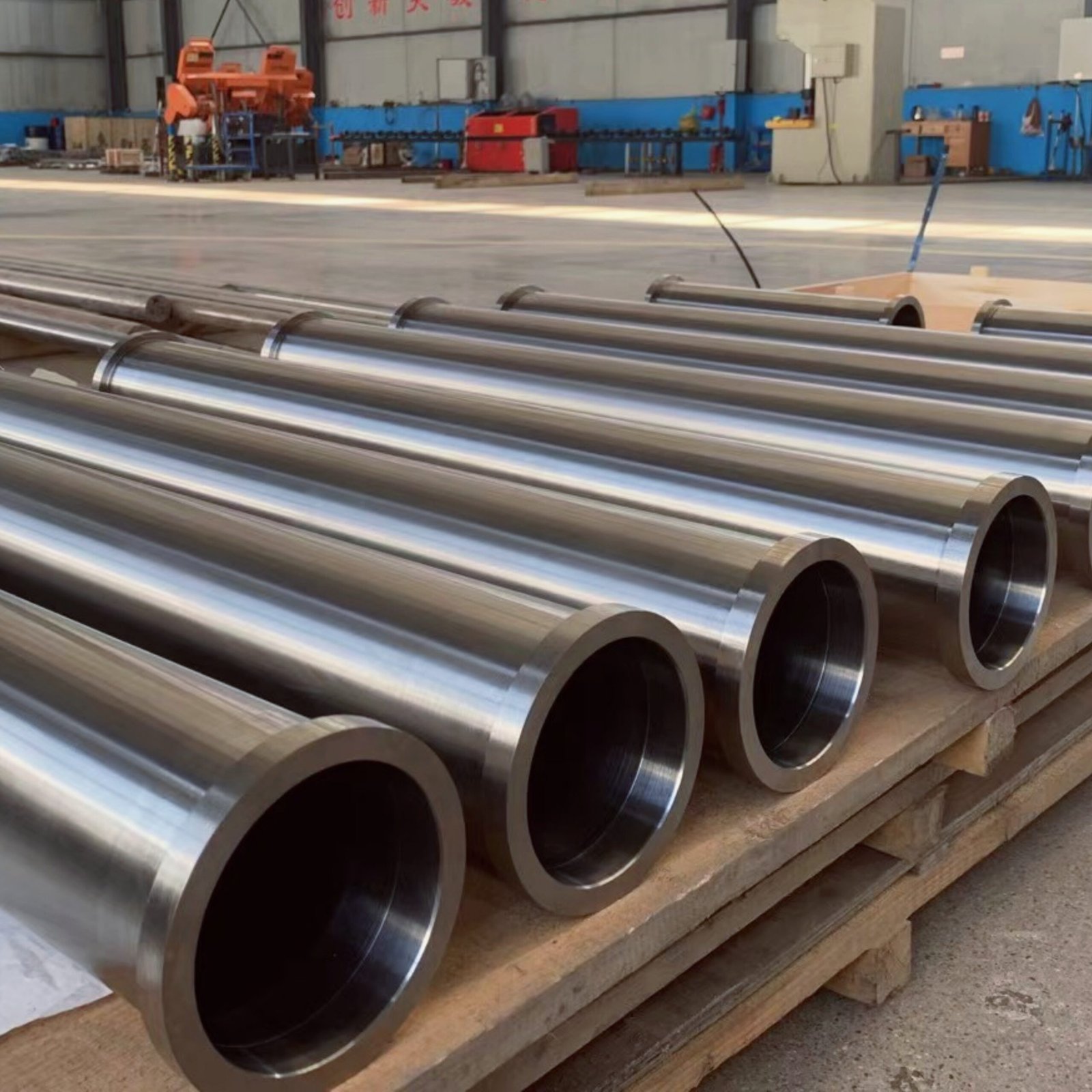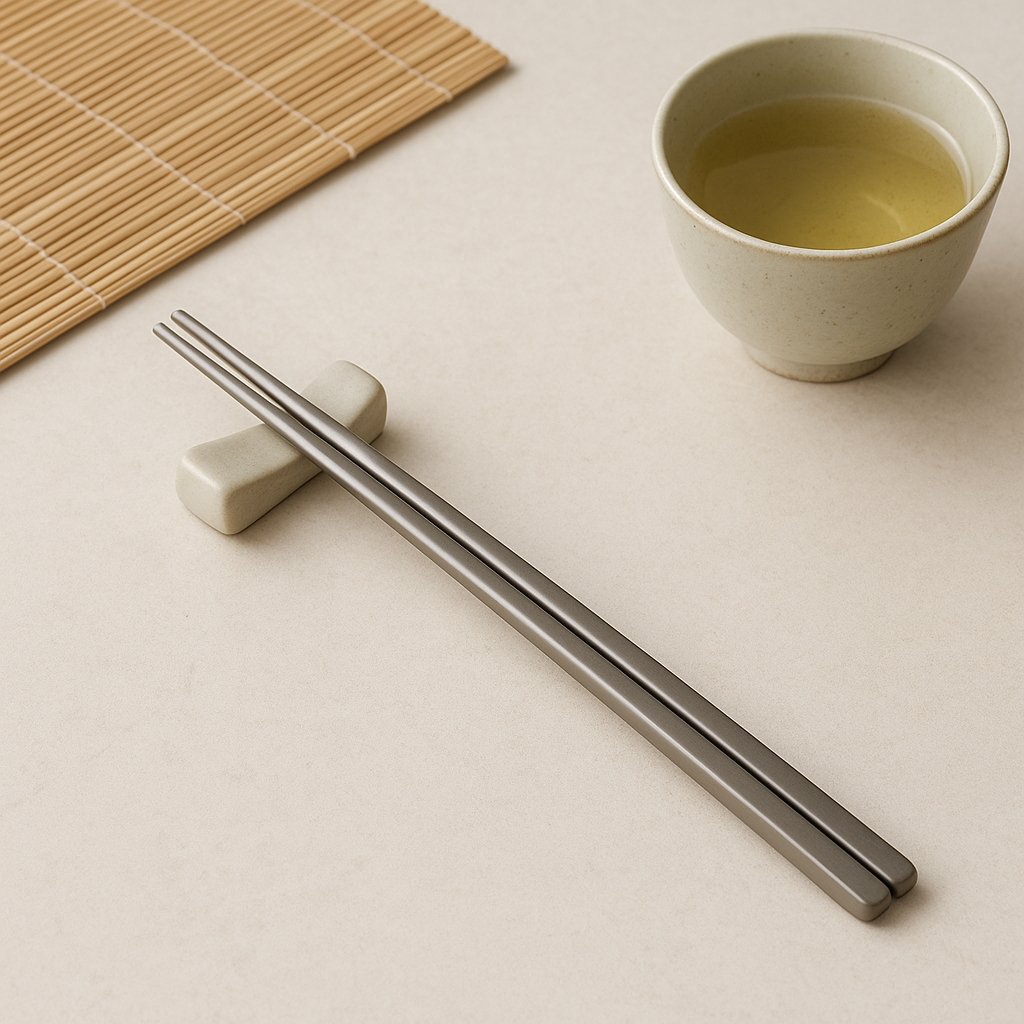Surfing, a sport intimately connected with the ocean's power and rhythm, demands equipment that can withstand the harsh marine environment while optimizing performance. Titanium has become a game-changing material in surfing gear, offering unmatched corrosion resistance and hydrodynamic efficiency. This article examines how titanium’s lightweight strength and resilience are transforming surfboard design and functionality.
Titanium's unique properties make it an ideal choice for surfing enthusiasts and professionals alike, enhancing durability against saltwater corrosion and improving maneuverability through advanced hydrodynamic profiles. As we delve into the intricacies of titanium's application in surfing equipment, we will uncover its role in pushing the boundaries of performance and sustainability in wave-riding gear.
At Young Things Metal Co. Ltd., we specialize in producing high-quality semi-finished titanium products that serve as the foundation for these advanced surfing components. Our materials help manufacturers create durable, high-performance surfing gear that meets the sport’s and environment’s demands.

1.Properties of Titanium Relevant to Surfing
Titanium possesses a unique set of properties that make it exceptionally well-suited for use in surfing equipment. Key attributes include:
- Corrosion Resistance: One of titanium's standout features is its remarkable resistance to corrosion, especially in marine environments. Unlike steel or aluminum, titanium resists saltwater exposure, reducing long-term degradation.
- Strength-to-Weight Ratio: Titanium is renowned for its high strength-to-weight ratio, making it lightweight yet incredibly strong. This characteristic is crucial in surfing gear, where reducing weight without compromising durability is essential for enhancing maneuverability and performance.
- Durability: Titanium's inherent durability ensures longevity in surfboard components such as fins, screws, and reinforcements. Titanium endures waves, impacts, and abrasion, providing surfers with long-lasting gear.
- Flexibility: Titanium’s flexibility absorbs energy and vibrations, ensuring smoother rides and better wave control.This flexibility helps optimize the response and performance of surfboards and related equipment.
- Biocompatibility: Titanium is biocompatible, meaning it is non-toxic and well-tolerated by the human body.Titanium’s biocompatibility ensures its safety for direct surfer contact, aside from its use in gear.
- Resistance to Temperature Extremes: Titanium performs reliably in all temperatures, from hot beach days to cooler waters.
Understanding these properties underscores why titanium has become increasingly favored in the design and construction of surfing equipment. We will explore how titanium’s properties benefit surfers, from durability to improved maneuverability and sustainability in surfing.
2. Corrosion Resistance in Marine Environments
Surfing equipment faces relentless exposure to saltwater, which poses significant challenges to durability and performance. Titanium's exceptional corrosion resistance makes it an ideal material for withstanding these harsh conditions.

- Challenges of Saltwater Corrosion: Saltwater is highly corrosive, capable of deteriorating metals and materials over time. Surfboards, fins, and gear made from steel or aluminum are prone to rust and degradation when exposed to seawater.
- Titanium's Protective Oxide Layer: Titanium naturally forms a protective oxide layer on its surface when exposed to oxygen, which enhances its resistance to corrosion. This oxide layer acts as a barrier, preventing saltwater from penetrating and causing damage to the underlying metal.
- Longevity and Maintenance: Titanium surf equipment requires minimal maintenance compared to traditional materials due to its corrosion-resistant properties. This reduces the need for frequent repairs, saving time and money while extending gear lifespan.
- Environmental Suitability: Beyond durability, titanium's resistance to corrosion aligns with sustainability goals in surfing. Longer-lasting equipment means fewer resources consumed over time and reduced environmental impact from manufacturing and disposal.
- Performance Consistency: Titanium preserves structural integrity and performance, ensuring consistent performance in various wave conditions over time.
In summary, titanium's superior corrosion resistance not only enhances the durability and longevity of surfing equipment but also contributes to sustainable practices in the sport. The next section will explore how titanium's corrosion resistance translates into tangible benefits for surfers, from improved reliability to enhanced performance in challenging marine environments.
3.Enhancing Hydrodynamic Efficiency
Hydrodynamics plays a crucial role in determining how efficiently a surfboard moves through water and responds to the surfer's commands. Titanium's unique properties contribute significantly to improving hydrodynamic performance in surfing equipment.
- Reduced Drag and Increased Speed: Titanium's smooth surface finish and low friction characteristics reduce drag as the surfboard moves through water. This reduction in drag translates into increased speed and responsiveness, allowing surfers to navigate waves more effectively.
- Precision Engineering and Design Flexibility: Titanium's strength-to-weight ratio allows for the creation of thinner, more streamlined components without sacrificing structural integrity. This capability enables designers to optimize the shape and profile of surfboard fins and other hydrodynamic elements for maximum efficiency.
- Vibration Damping and Stability: Titanium's inherent ability to absorb vibrations helps maintain stability and control on the wave face. By minimizing unwanted oscillations, titanium-enhanced surfboards offer surfers a smoother and more predictable ride, enhancing overall performance.
- Resistance to Warping and Deformation: Titanium resists warping or deforming under pressure or heat, ensuring consistent hydrodynamic performance. This stability is crucial for maintaining the integrity of surfboard designs and enhancing longevity.
- Innovative Applications in Surfboard Design: Titanium's versatility allows for innovative applications in surfboard design, such as integrating titanium alloys into fins, tailblocks, and reinforcements. These advancements push the boundaries of what is possible in hydrodynamic efficiency and performance.
In conclusion, titanium's contribution to enhancing hydrodynamic efficiency in surfing equipment is pivotal, offering surfers improved speed, stability, and control in challenging wave conditions. The next section will delve into specific applications of titanium in surfboard construction, highlighting its transformative impact on the sport.
4.Applications of Titanium in Surfboard Construction
Titanium's unique properties have enabled its integration into various components of surfboards, enhancing both performance and durability across different aspects of surfing gear.
- Titanium Fins and Fin Boxes: Fins play a critical role in maneuverability and stability on a surfboard. Titanium fins are known for their lightweight yet robust construction, offering surfers enhanced control and responsiveness. Titanium fin boxes provide a secure and durable mounting point, reducing the risk of damage or wear over time.
- Reinforcements and Tailblocks: Titanium reinforcements strengthen critical areas like the tail and nose sections, prone to stress and impact. These reinforcements enhance the board's overall durability without adding significant weight, ensuring it can withstand the rigors of intense surfing sessions.
- Hardware and Fasteners: Titanium screws and fasteners are used throughout surfboard construction to secure fins, leash plugs, and other components. Titanium hardware, known for corrosion resistance and light weight, ensures reliable performance and reduces rust risk.

- Customized Components: Titanium's flexibility in fabrication allows for the creation of customized components tailored to specific surfing preferences and performance requirements. Whether it's a unique fin design or a specialized reinforcement, titanium enables surfboard manufacturers to innovate and optimize board performance.
- Integration in Advanced Composite Materials: Titanium's compatibility with advanced composite materials, such as carbon fiber or fiberglass, further enhances its applications in surfboard construction. These hybrid materials combine the lightweight strength of titanium with the specific characteristics of composites, offering surfers unparalleled performance advantages.
Incorporating titanium makes surfboards lighter, more durable, and able to maintain peak performance in varied wave conditions. The next section explores case studies and innovations showing titanium’s impact on modern surfboard designs.By delivering semi-finished titanium products that meet precise specifications, Young Things Metal Co. Ltd. supports surfboard manufacturers in creating high-performance equipment that meets the needs of surfers.
5.Case Studies and Innovations
The integration of titanium in surfboard construction has spurred innovations that enhance performance, durability, and sustainability in surfing gear. Here are some notable case studies and innovations:
- Hybrid Titanium-Carbon Fiber Fins: Leading surfboard manufacturers have pioneered the use of titanium-cored fins combined with carbon fiber layers. This hybrid construction optimizes stiffness and responsiveness while reducing overall weight. Surfers benefit from enhanced maneuverability and control, particularly in challenging wave conditions.
- Titanium Tailblocks and Nose Guards: Titanium tailblocks and nose guards provide superior impact resistance and durability compared to traditional materials. These components protect surfboards from damage during wipeouts and collisions, ensuring longevity without compromising performance.
- Custom Titanium Reinforcements: Surfboard shapers are increasingly incorporating custom titanium reinforcements into high-stress areas of boards. These reinforcements boost structural integrity without adding weight, letting surfers push performance limits without worrying about durability.
- Innovative Fin Box Designs: Titanium fin boxes have evolved to offer adjustable settings for fin positioning, catering to surfers' preferences for different wave conditions and riding styles. Advanced locking mechanisms and corrosion-resistant coatings ensure reliability and ease of maintenance in marine environments.
- Titanium Hardware and Fasteners: Titanium screws and fasteners, known for corrosion resistance and lightweight, are now standard in surfboard assembly. Manufacturers use these components to secure fins, leash plugs, and accessories, contributing to the overall durability and performance of surfboards.
These case studies illustrate how titanium's properties and versatility continue to drive innovation in surfboard design and construction. By harnessing titanium's strength, durability, and corrosion resistance, surfboard manufacturers can deliver cutting-edge equipment that meets the demands of professional athletes and recreational surfers alike.
6.Sustainability and Longevity
In addition to enhancing performance, titanium's properties contribute significantly to sustainability efforts in surfboard manufacturing, promoting longevity and environmental responsibility.
- Durability and Reduced Environmental Impact: Titanium's exceptional corrosion resistance extends the lifespan of surfboards, reducing the frequency of replacements and minimizing waste. This durability translates into fewer resources consumed over time and a reduced carbon footprint associated with manufacturing and disposal.
- Recyclability and Environmental Benefits: Titanium is highly recyclable, with scrap and end-of-life components easily reprocessed into new materials. Manufacturers can reclaim titanium components for new boards or other products, promoting a circular economy and reducing reliance on new materials.
- Minimal Maintenance Requirements: Titanium's resistance to corrosion and degradation in marine environments significantly lowers the need for maintenance compared to traditional materials. Surfboards made with titanium components require less frequent repairs and upkeep, further reducing their environmental impact over their lifecycle.
- Alignment with Sustainable Surfing Practices: As sustainability becomes a priority in the surfing community, titanium's role in prolonging surfboard lifespan and reducing environmental impact aligns with surfers' desire for eco-friendly equipment choices. Manufacturers are increasingly integrating sustainable practices into their operations by adopting titanium and other environmentally responsible materials.
- Long-term Cost Efficiency: Although titanium has higher initial costs, its durability and low maintenance lead to long-term savings. Surfers benefit from durable, high-performance equipment that retains its value and functionality throughout extensive use.
Using titanium in surfboard construction promotes sustainability and longevity, helping preserve ocean ecosystems and offering a more sustainable surfing experience.The next section will conclude our exploration of titanium's impact on surfing gear, emphasizing its transformative benefits for surfers and the environment.
Titanium has emerged as a game-changing material in the world of surfing equipment, revolutionizing how surfboards and related gear perform in the dynamic environment of the ocean. From its unmatched corrosion resistance to its ability to enhance hydrodynamic efficiency, titanium offers surfers a combination of durability, performance, and sustainability that traditional materials cannot match.
Throughout this article, we explored the inherent properties of titanium that make it ideal for surfboard construction. Its ability to withstand saltwater corrosion ensures surfboards remain resilient against the elements, while its lightweight strength contributes to improved maneuverability and speed on the waves. Titanium's versatility in design allows for innovative applications in fins, tailblocks, and other critical components, offering surfers customized solutions that enhance their riding experience.
Furthermore, titanium's sustainability benefits, such as recyclability and minimal maintenance requirements, align with surfers' growing commitment to eco-friendly practices. By choosing titanium-enhanced surfboards, surfers not only enjoy long-lasting performance but also contribute to reducing environmental impact through reduced waste and resource consumption.
As surfboard manufacturers continue to innovate with titanium and other advanced materials, the future of surfing looks brighter than ever. Titanium's role in pushing the boundaries of performance and sustainability underscores its transformative impact on the sport, paving the way for surfers to explore new waves and elevate their surfing experience.
In conclusion, titanium surfing equipment represents the intersection of technology, durability, and environmental stewardship, offering surfers a sustainable choice for riding the waves with confidence and enjoyment.
Share this article
Written by : 钛合金网
Follow us
Table Of Content



